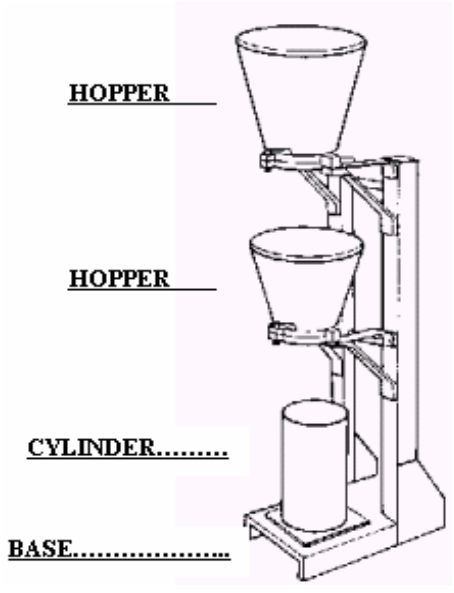In this article, the Compaction Factor Test is discussed which is used to calculate the compaction factor, and to know more about workability.
Compaction Factor Test
Objective:
To calculate the compaction factor, and to know more about workability.
Introduction:
These tests were developed in the UK by Glanville (1947) and it is measure the degree of compaction. For the standard amount of work and thus offer a direct and reasonably reliable assessment of the workability ff concrete. The test require measurement of the weight of the partially and fully compacted concrete and the ratio the partially compacted weight to the fully compacted weight, which is always less than one, is known as compacted factor. For the normal range of concrete the compacting factor lies between 0.8 – 0.92.
Standard:
B.S 1881 :PART 2 1970
Apparatus:
• The compaction factor apparatus shall consist of two conical hoppers mounted above a cylinder.

• Trowels.
• One scoop about 150 mm long.
• A tamping rod.
• A balance.
• A compacting rod.
Calculation:
Wt. of coarse aggregate : 6000 g
Wt. of aggregate : 6000 g
Wt. of sand : 3000 g
Wt. of cement : 3000 g
Water : 3000 mL .
Wt. of empty cylinder : 3767 g
Wt. of cylinder + partially compacted concrete: 13370 g
Wt. of partially concrete : 9603 g
Wt. of cylinder + fully compacted concrete : 15251 g
Compaction factor = ( partially compacted concrete / fully compacted concrete ) = 0.8362
Result:
We get the results, and have a Compaction factor of test =
Discussion and conclusion:
For the normal range of concrete the compaction factor lies between (0.8 – 0.92). This test is particularly useful for dryer mixes for which the slump test is not satisfactory. The sensitivity of the compaction factor is reduced outside the normal range of workability and is generally unsatisfactory for compacting factor greater than 0.92.
